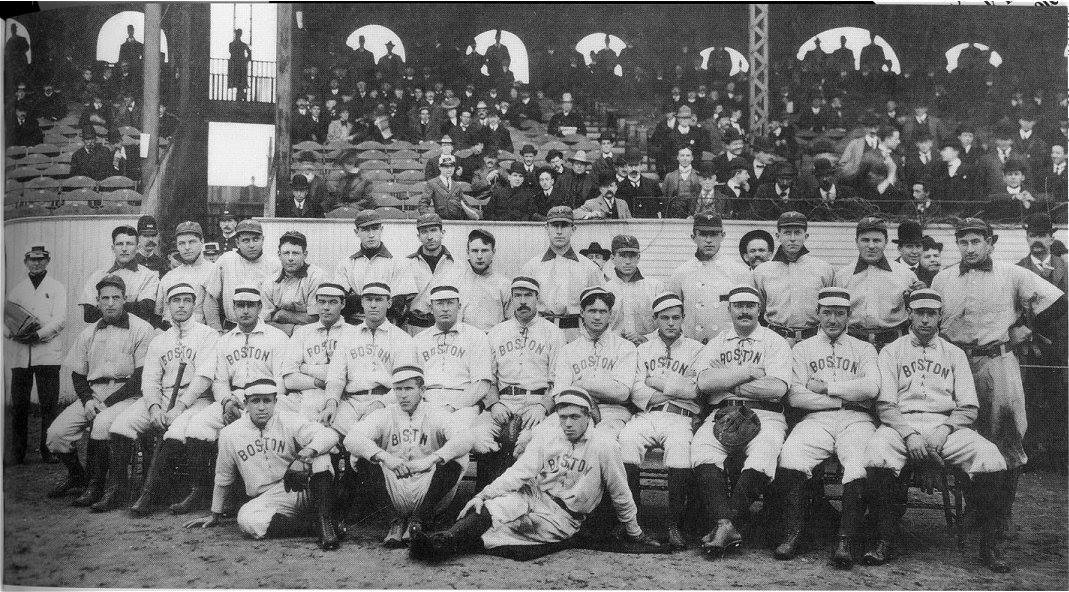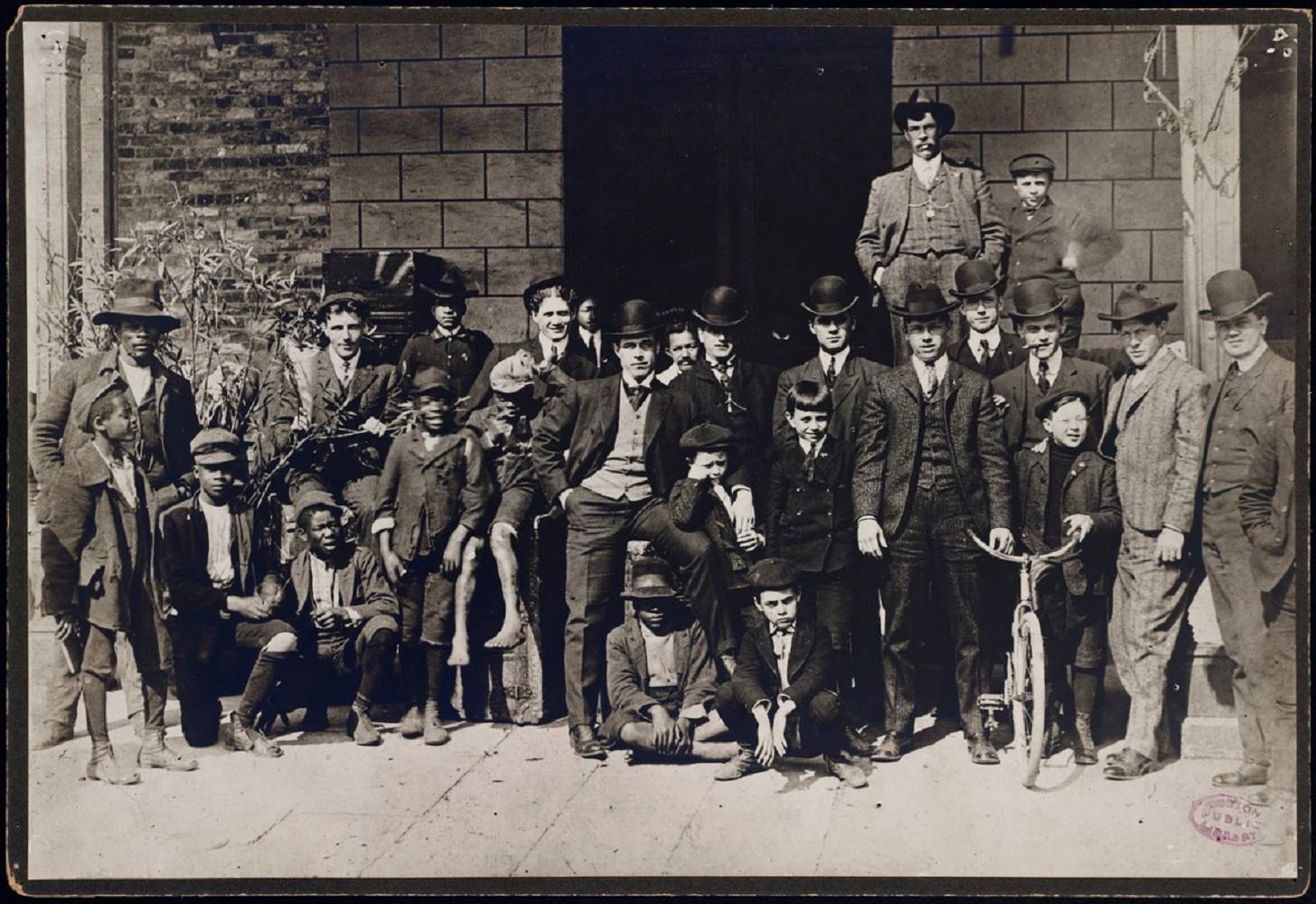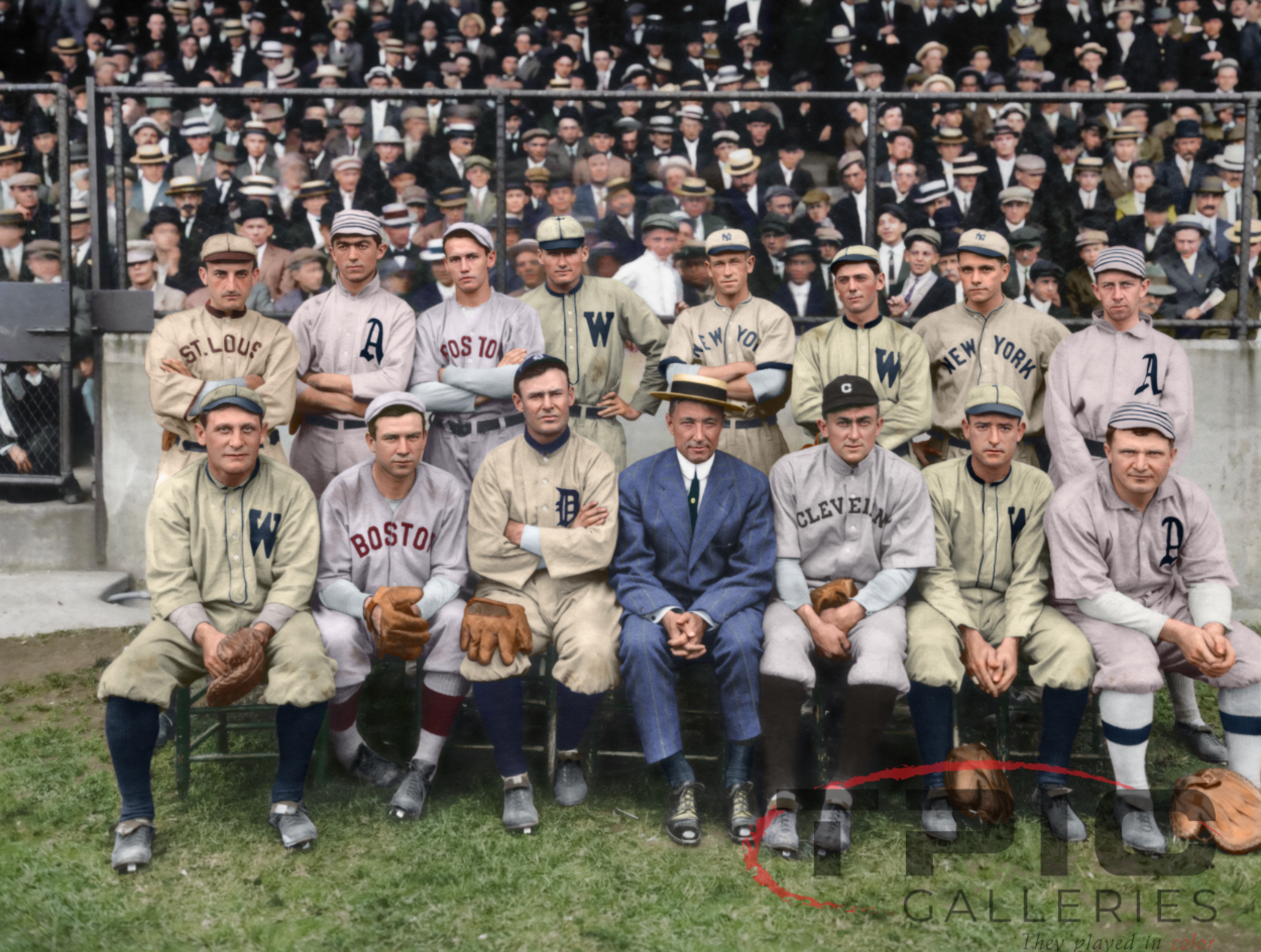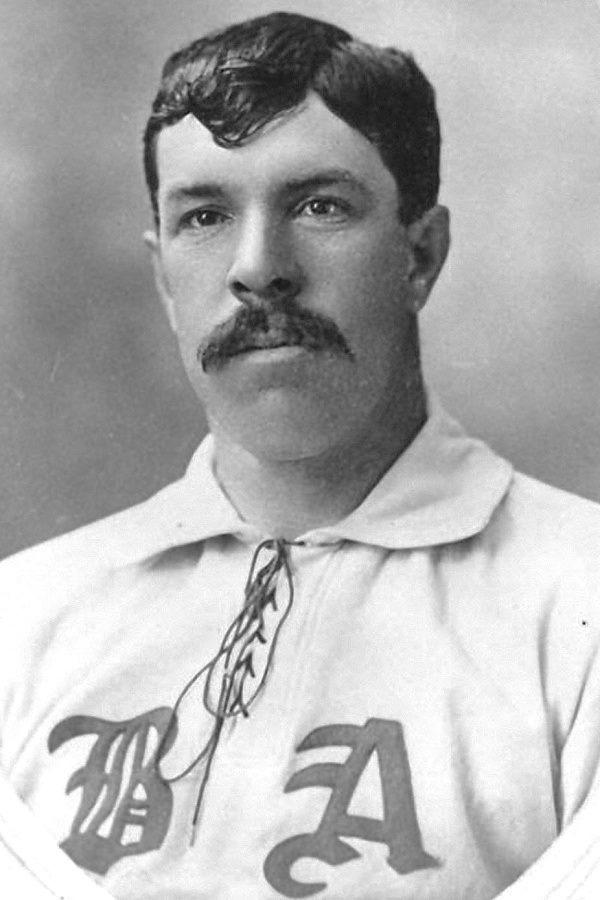Featured Photo Above:
Addie Joos Benefit Game, July 24, 1911
(Color Restoration by Chris Whitehouse of They Played in Color website)
Baseball History Comes Alive Now Ranked As a Top Five Website by Feedspot Among All Baseball History Websites and Blogs!
(Check out Feedspot's list of the Top 35 Baseball History websites and blogs)

Guest Submissions from Our Readers Always Welcome! Click for details
Please note: As we compose new blog entries, we will now send each one out to all our subscribers as we post them. Here’s a link to see the entire Blog Archives -GL
THE BASEBALL HISTORY COMES ALIVE BLOG
Please note: As we compose new blog entries, we will now send each one out to all our subscribers as we post them. Here’s a link to see the entire Blog Archives -GL
May 1, 2021
New Blog Topic: My All-Time Favorite Dead Ball Era Players!
Since many of you know of my love for the Dead Ball Era, I’ve decided to start a new series highlighting the careers of some of my favorite players from that long-ago era. It was a time when baseball saw some of its greatest characters and the game was played in its purest form.
I’ll start out by featuring my all-time favorite Dead Ball Era player, the one and only:
“Candy” LaChance!
I sometimes think I may be one of the very few people on earth who not only has heard of Candy LaChance, but also thinks he’s worth calling to your attention. And so you might ask, “What’s so special about Candy LaChance?” Was he a great ballplayer? Does he hold some unbreakable records? Well, no…not at all. He was a decent ballplayer with a lifetime average of .280. But that’s not it…
A Great Nickname!
The reason I like him so much, for one, is because of his nickname. In a game known for clever nicknames, “Candy” has to be one of the best. He apparently picked up the moniker because he liked to chew on peppermints during games rather than chew tobacco, highly unusual for the times.
You Gotta’ Love the ‘Stache!
And secondly, I also like him because of the way he looked. He could have stepped right out of central casting, as the quintessential ballplayer from the 1890s, just before the turn of the century. In an era where most ballplayers were “cleaning up” the facial hair around this time—you don’t see too many beards or mustaches after 1900—Candy stubbornly held on to his great ‘stache.
At 6’1”, 183 lbs, he was a big man for the times, and the mustache actually made him look like a “throw-back” to 19th Century baseball. Or, as Bill Gutman recently mentioned when I showed him a pic of Candy, “He looks like a guy who could act in the old Keystone Kops movies, as the villain.”
Are You Ready for the Quizzes?
And now that you know who Candy is, you’ll always be able to pick him out of old photos. Just to show you what I mean, here’s two quizzes:
1. Within ten seconds, find Candy LaChance in this great pic from the very first World Series in 1903. Ready…Go!

Easy! I told you. You can’t miss him. There’s our man Candy seated smack-dab in the middle of the photo. (By the way, I did the complete player identifications for this pic a while back and if anyone wants to see the names, just let me know).
2. Within ten seconds, find Candy LaChance in this photo of the 1904 Boston Americans, winners of the 1904 pennant:

Another easy one! There he is at the top right, next to the little kid. I guarantee you’ll never miss Candy LaChance again. (Actually, I’m not sure if there ARE any more pics of Candy!)
Candy’s Career
Anyway…here’s a few words about “Candy” LaChance, the Dead Ball Era ballplayer with the great baseball name and one of the most recognizable faces in the entire history of the game:
Switch-hitting George “Candy” LaChance played 12 seasons (1893-1905) in the Big Show. Over his career, he hit .280 with 39 home runs, 690 RBIs, 678 runs, and 192 stolen bases. Candy played for the old Brooklyn Bridegrooms, Baltimore Orioles, Cleveland Blues, and Boston Americans. He hit .300 or more five times, and averaged 26 stolen bases from 1894 to 1899. His best season was 1895 while with Brooklyn when he hit .314, scored 102 runs, drove in 111 runs, and stole 37 bases. While with Boston in 1903, he was the starting first baseman in the first-ever World Series.
After his major league career ended, Candy played with Montreal and Providence in the International League and for Waterbury and New Haven in the Connecticut League. Candy LaChance died in Waterville, Connecticut at the age of 62.
I love shinning our baseball spotlight on forgotten ballplayers from the past. If we didn’t do it once in a while, they would be totally lost over the passage of time. Next up will be my second favorite Dead Ball Era player: George “Hooks” Wiltse!
By the way, if you have a favorite Dead Ball Era player you’d like to see featured in this series, just let me know.
Gary Livacari
As always, we enjoy reading your comments
Here’s a link to see the entire Blog Archives



My favorite deadballer is Sherry Magee. He was born about 5 miles from my hometown. He never spent a day in the minors. Was a pretty good all around ball player. He definitely had a temper. Socked an umpire once, then actually became an umpire after his playing career ended.
Thanks, Dave. I’m familiar with him. I’ll put him on the list!
Gary…have you heard of John Frances “Phenomenal” Smith in the late 1800’s? To give you an idea of his cocky personality, he gave himself the nickname.
Thanks…Sounds like a good one! Can’t say I’m familiar with him.
Thanks to Pete Aman for sending some interesting information about Dead Ball Era player Phenomenal Smith:
A Life Lesson from Phenomenal Smith
John Frances Smith, a promising curve ball specialist in the late nineteenth century, chalked up a no-hitter in 1885. This cocky, 5’6”, 19-year-old was disliked by everyone, including his teammates. When he was traded to the Brooklyn Grays, Smith insisted that his new teammates call him “Phenomenal” Smith because of his no-hitter. He boasted he didn’t need teammates to win a ballgame because in that no-hitter the ball had never left the infield. His teammates didn’t take kindly to his arrogance so conspired against him for his debut a few days later against the St. Louis Browns. They committed fourteen dubious “errors” in the game, including seven grounders that the shortstop paid little attention to as they went by. Smith’s team lost 18-5. Brooklyn’s club president was furious and fined his players, but also realized that his new pitcher, Phenomenal Smith, was poisoning the team with his attitude. He released Smith after that game to keep harmony on his ball club. Smith then signed with Philadelphia, lasting for one game, then to Detroit where he hung on for three games. He played for a few other teams, then bounced around the minor leagues, playing for twelve different teams. Nobody wanted him despite his talent.
Phenomenal Smith had his issues, for sure. For one, he was off-the-charts arrogant. Arrogance and pride are destructive, poisonous, and will ruin one’s career, relationships, and life. He also had another problem, one more subtle, but just as dangerous. He boasted he could win without his teammates, that he didn’t need them. We’re not too much different—we often think we can get through this journey on our own, that we don’t need others. But we dare not
be lone rangers, which is just another form of arrogance. “Though one may be overpowered, two can defend themselves”, king Solomon pointed out. He added, “A cord of three strands is not quickly broken.” We all need at least one or two close fellow-travelers on this road to share both the joys and the hard stuff of life. If we have that, it’s phenomenal.
Great comment. I certainly am not phenomenal, but very close to it…..ask my grandkids.
Haha! I’ll take your word for it!
Gary,
Irony. I am working on an essay on Phenomenal. He also “discovered “ Christy Mathewson and managed Moonlight Graham-all after he retired from his pitching career in the 1880’s.
He went on to manage in the minors for many years in the New England League and managed Moonlight for the Manchester team the year before Graham made his line appearance.
He retired and went on to a career as a policeman in Manchester and coached the local college basketball team for many years. He is buried in Bedford, NH, less than a half mile where my daughter lives. More to follow.
Wow…what a coincidence! I’ll be looking forward to your write-up about him for sure!
Candy Lachance sounds like a lottery ticket sold in Hershey, PA.
Actually, if he was a woman, it’s be a great name for a porn star!
I would love to see it, also. Facts were hard to come by for my story, and I would appreciate any additional information about him.
Great stuff, Gary. Both fun and informative. So many forgotten players and these guys from the Dead Ball Era somehow seem a lot more colorful (to be nice about it) than the players of later years, especially those of day where just a very few have clever, colorful nicknames.
Hey Gary! Two of my favorite Deadballers were catchers featured in A Glory Of Their Times: Chief Meyers and George Gibson. I always enjoy reading about them. A third is Ed Konetchy and I’ve never understood why he is forgotten despite a really good career.
Thanks Phil, I’m familiar with all those guys. I’ll put them on my list. Hopefully, we can give them a little publicity.
My favorite is “Slidin’ Billy” Hamilton. For me the essence of offense is scoring runs — not homers, stolen bases, walks, tape-measure shots, etc. In almost 1600 career games he scored almost 1700 runs. In 13+ seasons he scored more than 100 runs 11 times. His top 5 totals were 144, 152, 153, 166, & — believe it or not — 198. Think if he had batted just ahead of Hack Wilson in 1930, when Hack had 191 RBI!
Isn’t it wild, David, that over 100 years later, there is another speed demon named Billy Hamilton in baseball? Funny game, isn’t it?
My favorite dead ball baseball player was probably James Francis Galvin better known as “Pud”. He was also known as “Gentle Jeems” or the “Little Steam Engine”.
Was the first pitcher to win 300 games. Probably had the greatest pick-off move of all time. In one game he walked the bases loaded and picked off all 3 runners. They say that he was the first player to take performance enhancing medicine. He didn’t need it, he was better than that. Was one of the first players after Candy Cummings to perfect the curveball. The name “Pud” meant that he turned batters legs into pudding or it could have meant his shape.
Sean,
Galvin injected monkey testosterone; probably the equivalent of taking Previgen today to enhance our memory—highly debatable.
Reminds me of the joke of the guy who wore always wore garlic around his neck. When asked why, he said it was to keep the elephants away. When told there were no elephants within two continents, the garlic wearer retorted, “Exactly! It’s working.”
Galvin…damn spellcheck!
Don’t worry Paul…I’m coming to your rescue! Check the name again above.
I might try that garlic trick…i’m “halving” trouble with elephants lately…